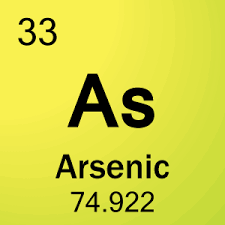Aquam Corporation selects Locus Technologies software for IoT integration
MOUNTAIN VIEW, Calif., 5 June 2018 — Locus Technologies (Locus), a leader in multi-tenant Software-as-a-Service (SaaS) for environmental compliance and sustainability management, will provide its IoT integration capability to Aquam Corporation (“Aquam”), a global provider of risk mitigation technologies for water and energy transmission and distribution assets, to create a robust data platform for its customers via Orbis Intelligent Systems. The Locus software will be integrated with the Orbis platform to allow interconnectivity across multiple devices, data streams, and geographical locations.
Orbis Intelligent Systems is positioned to be a market leader in infrastructure and water quality data-driven monitoring for commercial, domestic and utility applications.
“We chose Locus software for the reliability and data security that enables our technology platform to operate with robust, data-driven communication for all Aquam customers around the world to utilize. With the integration of rapidly scalable Locus software, we are at the forefront of IoT and well-positioned to offer asset ‘active management’—a core value to our customers and value proposition,” said Danny Krywyj, president for Orbis.
Locus Technologies’ multi-tenant cloud platform can help organizations to manage, organize, and monitor the structured and unstructured data coming from various sources. This allows customers to create a centralized data repository to analyze the key indicators for environmental data management, sustainability, and environmental compliance.
“Aquam Corporation will reap the benefits of IoT integration for monitoring data generated by different streaming devices, by centrally connecting these sources in a scalable cloud-based application for better managing compliance. Real-time monitoring of data directly and effectively solves many challenges related to smarter environmental management and sustainability initiatives,” said Wes Hawthorne, president of Locus Technologies.
ABOUT AQUAM CORPORATION
Aquam Corp is a global provider of technology solutions for water and energy distribution infrastructure. We ensure the health, longevity, safety, and reliability of vital resources for water and gas utility, municipal, commercial, residential, and industrial markets. Our award-winning proprietary technologies address water scarcity issues by the diagnosis, cleaning, and remediation of aging infrastructure. Aquam also provides end-to-end service solutions and technologies for the maintenance, life extension, and full rehabilitation of network distribution infrastructure, which include: Nu Flow Technologies, a leader in small-diameter infrastructure rehabilitation technologies; Specialized Pipe Technologies (SPT), a pipe assessment and rehabilitation services provider; Aquam Pipe Diagnostics, a global pipeline assessment specialist. Aquam services are available in North America, South America, Europe, Africa, Australasia, and the Middle East. For more information visit www.aquamcorp.com or contact aquam@missionC2.com.

